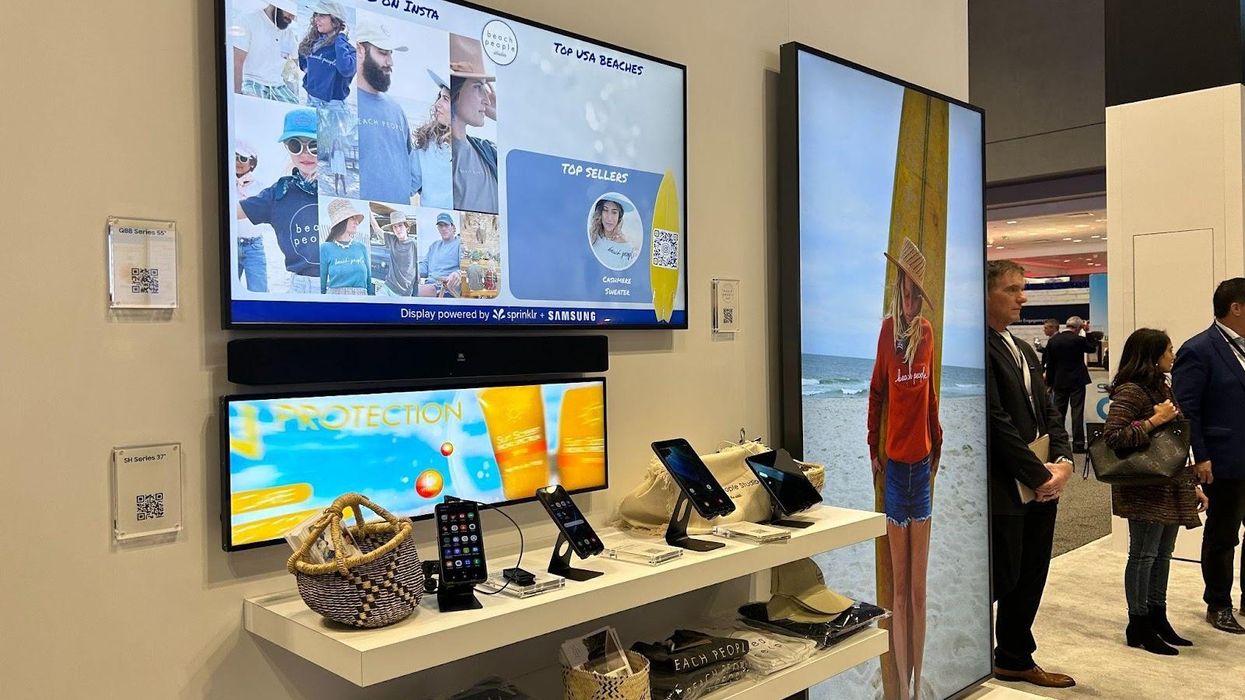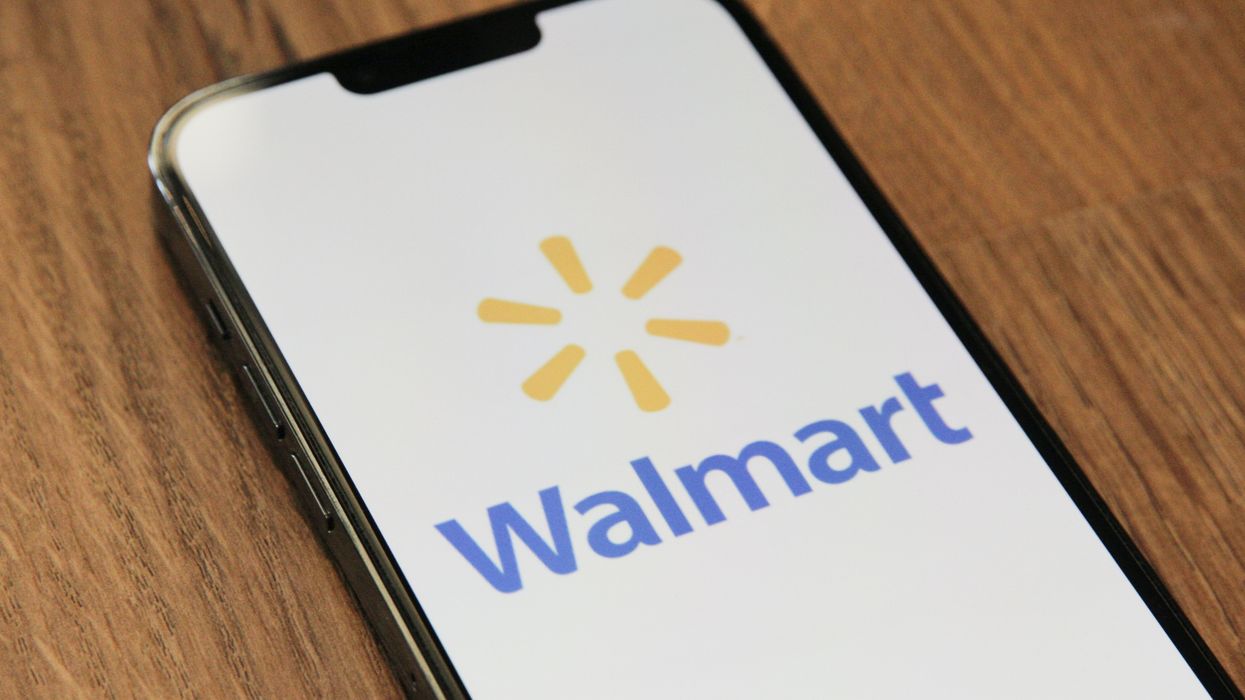Retailers must adapt with economic conditions. Digital solutions offer a way to move at the pace of change.
That’s how Samsung views digital displays it offers to retailers. Shopping has undergone plenty of shifts in the last year, from the move back to stores to a more cautious consumer approach amid rising inflation. Yet demand has continued to be strong, meaning traffic into stores and sales have continued apace. So retailers are continuing to seek ways to enhance their stores, especially as consumers seek to incorporate more digital elements into browsing and buying routines. More than adding a screen to a store, the displays are designed to create a more seamless shopping experience for consumers and retailers, while also connecting in-store and digital shopping.
Recently, The Current sat down with Parrish Chapman, Samsung Electronics America's senior director of enterprise retail sales key accounts, for a look at how displays can play a role in addressing challenges that come with labor shifts, as well as swings in pricing and consumer behavior that are a result of inflation.
Here’s a look at areas where Samsung is helping retailers in addition to setting up the display hardware and software:
Support for a stretched staff
The last year has brought a return to in-person shopping, but headcount is still reduced.
With the shift to digital commerce in the pandemic, retailers recalibrated their teams to provide support in areas that were seeing the explosion of ecommerce growth most acutely. Now, there’s a return to stores, but unemployment remains historically low. Retailers must once again adjust, even though staffing levels remain consistent.
Retailers have put digital display solutions in place, but the IT professionals who used to run them are now in a different department.
“If they want to grow that program, they need support to grow it,” Chapman said.
To pick up those responsibilities, Samsung is growing services that provide monitoring. This support layers on to the display hardware that the company already provides.
Pricing at the pace of inflation
As the country continues to experience high inflation, price fluctuations remain a feature at many stores.
Samsung is able to account for this digitally. By connecting a display on the shelves back to the point-of-sale, prices can change at the pace of the shifts in the market. This could be in grocery, where egg prices were the latest to move up and down quickly. It is also evident in fast fashion, where looks move quickly from the runway to the store.
The combination of inflation and shifting consumer patterns is also leading to a highly promotional environment. With digital displays, retailers can reflect changes in price, or indicate when an item sells out.
The display doesn’t only show dynamic pricing, but also how inventory levels are shifting.
“Visual display allows us to address some of these core needs with the volatility of the market,” Chapman said.
Loyalty across channels
At a time when prices are higher and consumers are more cautious, retailers are leaning toward the most loyal customers that have shown a desire to stick with a brand, and initiatives that keep them coming back.
Digital displays are helping to provide interactive elements with these programs, such as a QR code that details the incentives of a loyalty program.
It’s also a way to cross online and physical shopping. Consumers may see an item in store, but not see it in their size. A digital display provided by an associate can help to provide the endless aisle that shows the item is available, even if it isn’t on the rack.
This is another area that offsets concerns about labor, and creates efficiencies for retailers.
Advertising brings revenue opportunities
For any business leader, a key part of justifying an investment in a display is the ability to create a new way to pay for it. With advertising supplied by an exchange available to be served to a display, Samsung offers an additional way for retailers to generate revenue.
It’s an offering that effectively brings retail media into a brick-and-mortar setting. A key strength of retail media is brand safety, and Samsung’s offering is designed to provide control. So a retailer could choose to block a certain type of ad because it doesn’t align with their brand.
“We can go out there and sell the content automatically through an exchange, and then our service takes the ad, we approve the content based on the formatting of the displays and then we allow the client to do the final approval,” Chapman said.
Along with revenue, advertising could help enhance shopping for consumers.
“Great ad content solves a problem for the retailer,” Chapman said. “It makes the experience better if it's the right content.”
Data on display
A display can also be a business-facing tool. On a display that’s used for internal operations, Samsung takes the approach of providing key information to retailers that drive business outcomes. It’s a way to find the right data to put in front of the team.
“Our clients are swimming in data, but it's coming from all different sources,” Chapman said. “We don't want 100 streams of data. We want to pick the ones that we can leverage visual display to impact and then report on quickly.”
Chapman said Samsung "takes the data we think is most important to retailer to improve business outcomes," and simplifies it. On a digital display, the data is both given prominence in a retailer's priorities, and in a place where it is easily accessible.
In-store adoption
As with any piece of technology, a display won’t be effective for a retailer if it is simply set up and then left to run on its own. Chapman said Samsung makes an effort to connect with associates from the beginning. The company provides training to store staff that explains the key metrics it is driving, as well as discussing that kiosks are designed to free them up to do less cumbersome tasks. After a display is installed, Samsung conducts surveys to understand how staff are using the display and their satisfaction with it.
To ease consumer adoption, it also makes an effort to take a “slow build” approach that understands how consumers want to use a display, and doesn’t force it on them.
“We introduce it before we do it, and then once we introduce it, the consumer has a choice to use it,” Chapman said. “Then we slowly tweak it and use those metrics as we move forward.”












